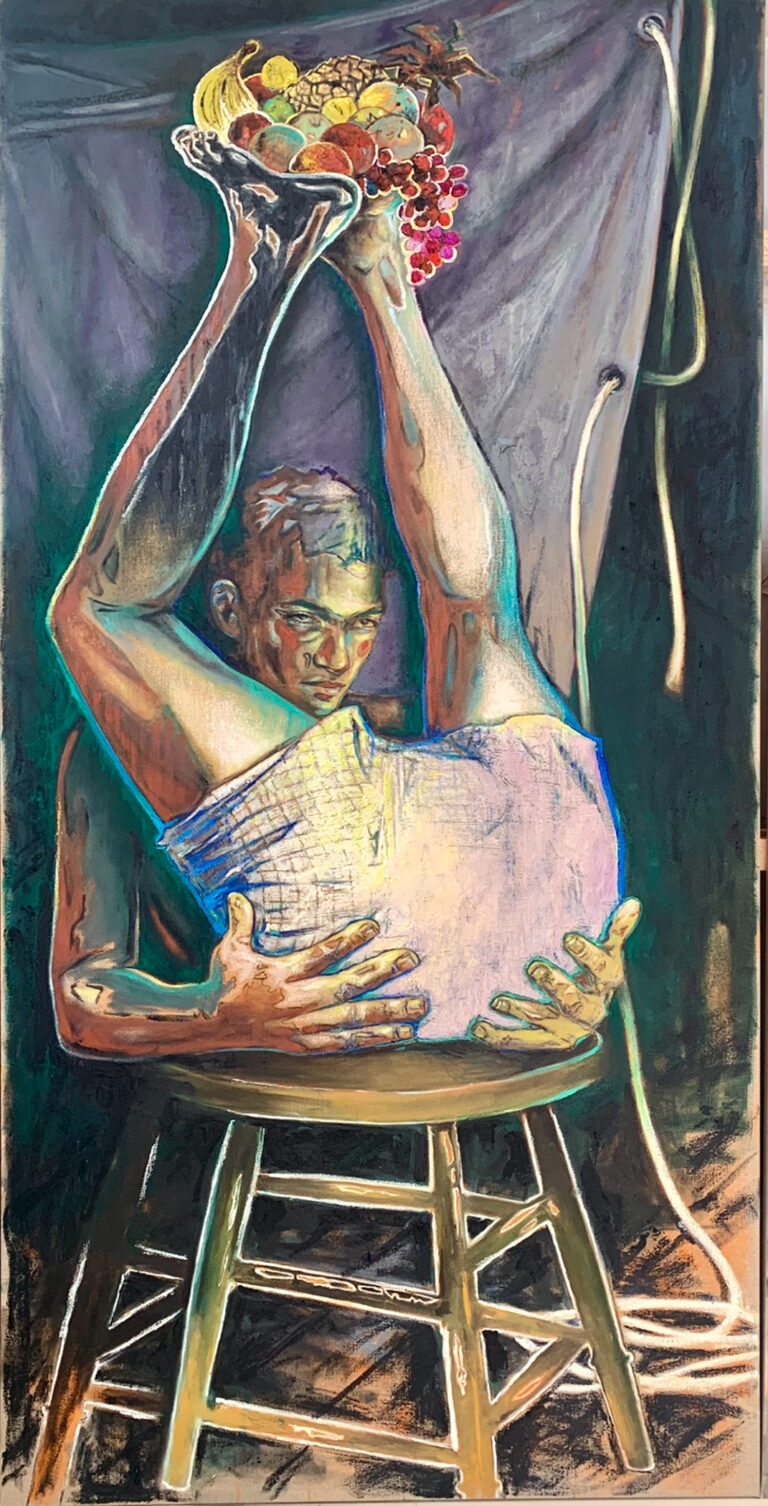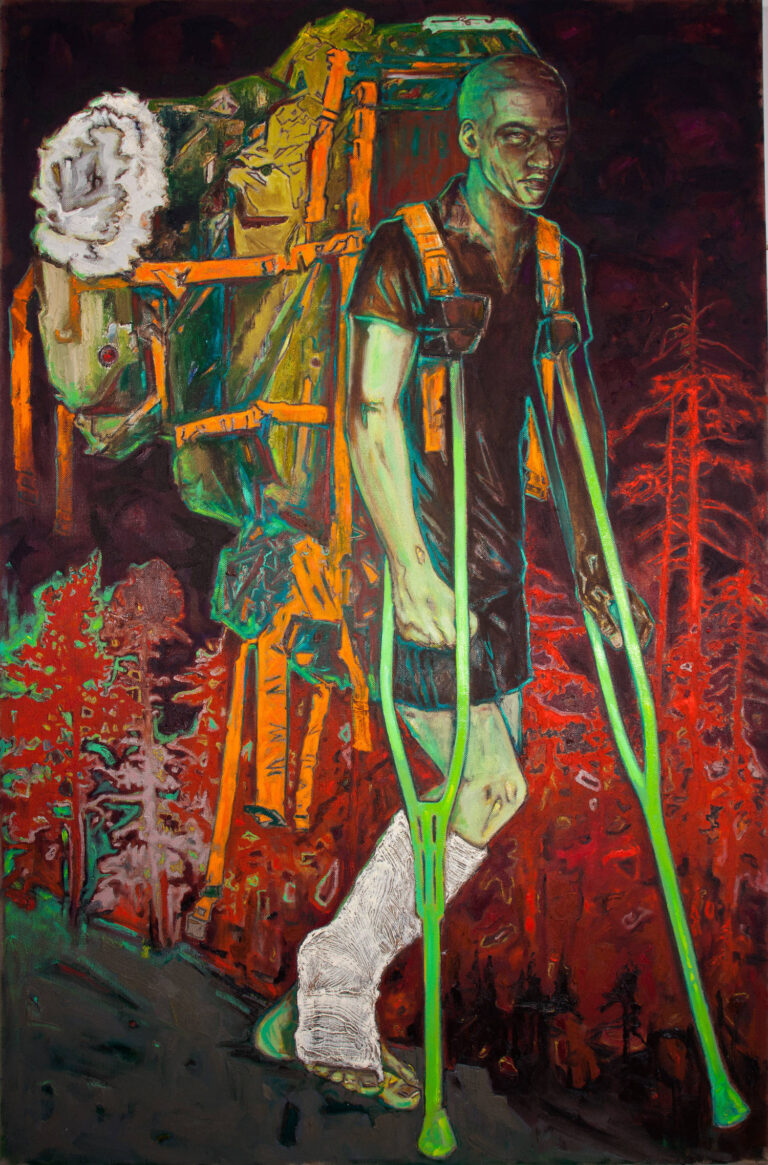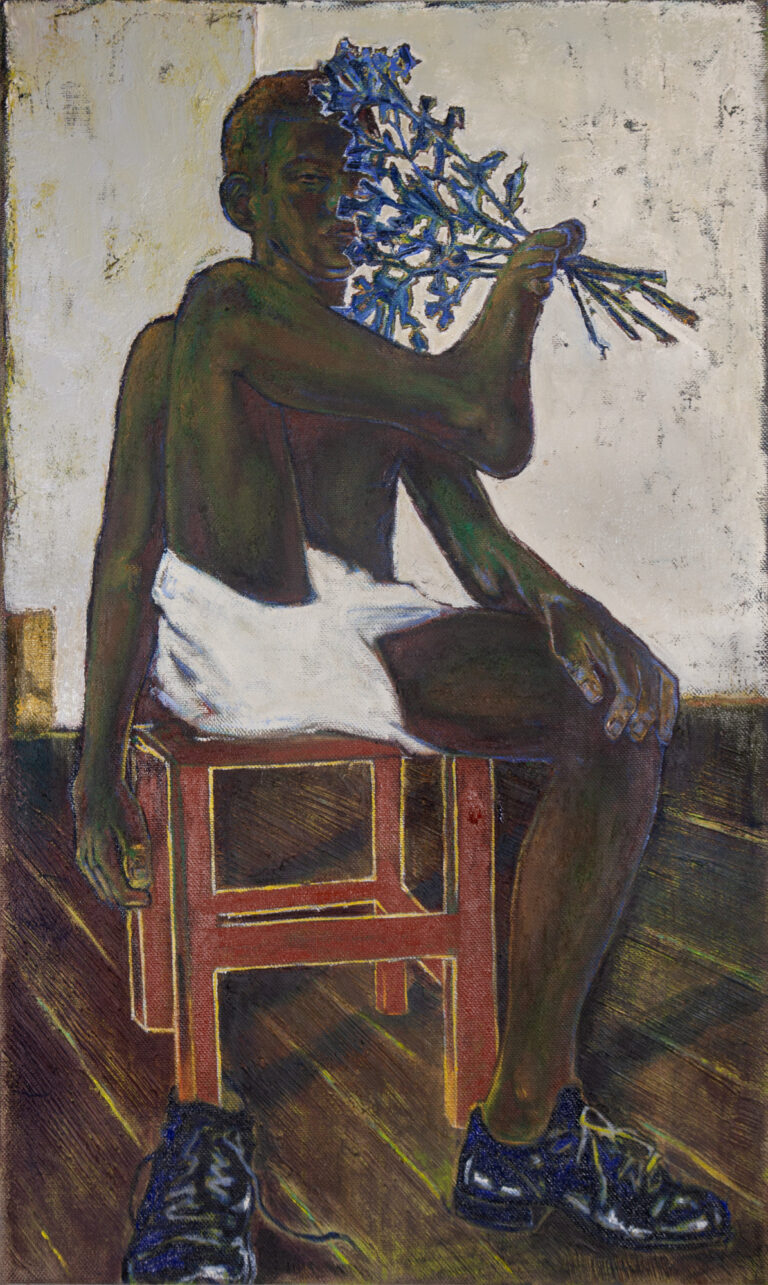Anthony Goicolea
Double Standard
2 MAY until 21 JUN 2025
Opening – 2 MAY 2025, 7-9 pm
In the exhibition Double Standard, the American artist Anthony Goicolea is showing new works on canvas in which he deals with the theme that runs like a common thread through his entire oeuvre: the contradiction between inner and outer perception, the conflict between self-determination and the determination of others, the tug-of-war between social norms and personal identity, resulting from different cultures, sexual orientations or gender roles.

Anthony Goicolea
Fruit Bowl, 2024
Öl, Kaltwachs und Sand auf Rohleinen
203 x 102 cm
Courtesy the artist and Crone
Anthony Goicolea, born in 1971 as the son of Cuban immigrants in Atlanta, Georgia, is one of the most versatile contemporary artists of his generation. After graduating from the Pratt Institute in New York, he became known in the late 1990s for his conceptual photographic works and videos, in which he often slipped into multiple roles himself. For the last two decades, he has concentrated primarily on painting, with occasional forays into sculpture and installation. His works are regularly exhibited in major museums and art institutions, including the Brooklyn Museum, the Hirshhorn Museum in Washington, DC, and the Guggenheim Museum in New York.
Double Standard takes us on an emotional journey through the spheres of a constant search for meaning. Goicolea shows people in strange, melancholy moments in which they seem to be caught on the border between reality and a dream world. The figures in his pictures appear lost and yet self-confident, fragile and powerful at the same time. They find themselves in moments of deep loneliness, longing and absurdity, triggered by the fascination of the physical and intimacy.
Goicolea’s painting style is characterized by an expressive visual language, which he masterfully combines with surreal elements. His motifs appear like snapshots from a movie that has no clear plot but captures the essence of life: the flow of time, the innocence of youth, the beauty of imperfection, and the hope that something new and better can come.

Anthony Goicolea
Atlas Crossing The Darién Gap, 2024
Öl, Kaltwachs und Sand auf Rohleinen
173 x 112 cm
Courtesy the artist and Crone
What stands out is the subtle humor that counteracts the somber tones of Goicolea’s works. Amid the drama and isolation, there are always moments of irony and lightness, inviting the viewer to accept and perhaps even celebrate the oddities of life.
Goicolea’s pronounced devotion to ambiguity and the unsettling is probably not least due to the fact that he grew up as a Cuban immigrant child in the south of the United States. He learned early on about the feeling of not quite belonging in a place, the unspoken discomfort in a situation where you don’t really know what is wrong. In his art, he therefore always seeks out the border areas and threshold states, the moments on the brink and the uncertain terrain in which temporal and local localization become difficult and the viewer is no longer sure what they are looking at.
In Goicolea’s paintings you can sense this certain misplaced unease of the strange or alienating, not immediately, not superficially, not brute, but with charming, loving subtlety. The colors are intense, the gazes are fixed even when they drift off, the bodies are all androgynous, youthful, a little lascivious, but not intrusive.

Anthony Goicolea
Nose Gay, 2024
Öl, Kaltwachs und Sand auf Rohleinen
92 x 56 cm
Courtesy the artist and Crone
The literally dislocated nature of his pictures sometimes remains discreet and then suddenly becomes apparent in all its drama. You believe Goicolea when he says that he has never been particularly interested in the idea of a “before” and an “after.” His protagonists operate in the tense space between the given image and our personal interpretations. With references to pop culture, mass media and fictional memories, they appear to have emerged from a pool of images and ideas that seem both familiar and alien. Whether we like it or not, they awaken a desire in the viewers to continue telling their stories in their own minds.
